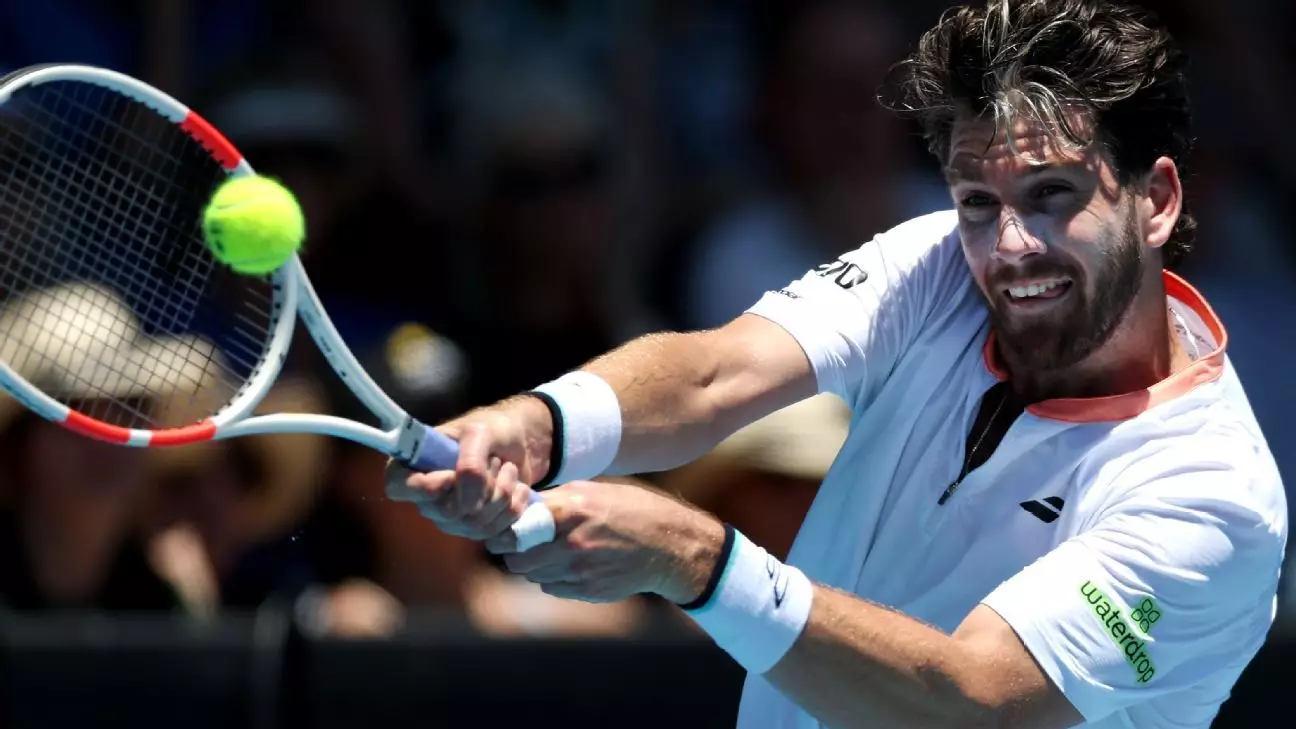In an incident that captured the attention of tennis enthusiasts globally, British tennis player Cameron Norrie faced a precarious moment during his first-round match at the ATP Tour tournament in Auckland, New Zealand. Norrie, who was born in Auckland but represents Great Britain, found himself in a challenging position against Argentinian player Facundo Diaz Acosta. On the brink of losing the match, Norrie performed a gesture that would spiral into a minor controversy: he tossed his racquet into the air, only for it to accidentally hit a spectator seated in a nearby court-side box. Fortunately, the spectator remained unharmed, but Norrie’s act stirred discussions about player conduct and accountability on the court.
After realizing the racquet had struck a fan, Norrie quickly approached the situation with humility and remorse. In a post-match interview, he expressed his regret, stating it was an unintended action and certainly not reflective of his usual behavior. Despite receiving a warning from the chair umpire—a measured response given the potential seriousness of such incidents—Norrie’s focus remained on ensuring that the spectator was alright. “I wasn’t meaning to do that,” he clarified, acknowledging that while it was an unfortunate event, the spectator was in good spirits, which eased the tension of the moment.
Norrie’s situation is reminiscent of previous incidents in tennis where players faced severe consequences for unintentional actions. For instance, Novak Djokovic’s disqualification at the 2020 US Open remains a significant example of how easily a player’s actions can lead to dire ramifications, even when the intent is far from malicious. This precedent serves as a cautionary tale for players in high-stakes environments where emotions can run high, as evidenced by other instances in 2023 where players faced disqualifications due to similar accidents. This ongoing discourse emphasizes the necessity for athletes to maintain vigilance, not just in the game but also in their surroundings.
The incident highlights the pressing need for sportsmanship in today’s competitive athletic landscape. While the ATP and WTA tours have been known to foster an environment of intense competition and high stakes, a culture of accountability also remains vital. Players must navigate their emotional responses while considering the safety and well-being of those who support them—often from just a few feet away. Through Norrie’s apology and quick recognition of the incident, he demonstrated an understanding that professional athletes must balance competitiveness with kindness, and that their actions have ripple effects beyond mere scores and victories.
Events like this serve as poignant reminders of the complexities that come with professional sports. As players navigate their paths, they must remain vigilant, recognizing that each action can either reinforce their reputation or, detrimentally, alter it. As for Norrie, his graceful handling of the situation may not change the outcome of the match, but it certainly reaffirms the importance of sportsmanship amidst the passionate fervor of competitive tennis.


Leave a Reply